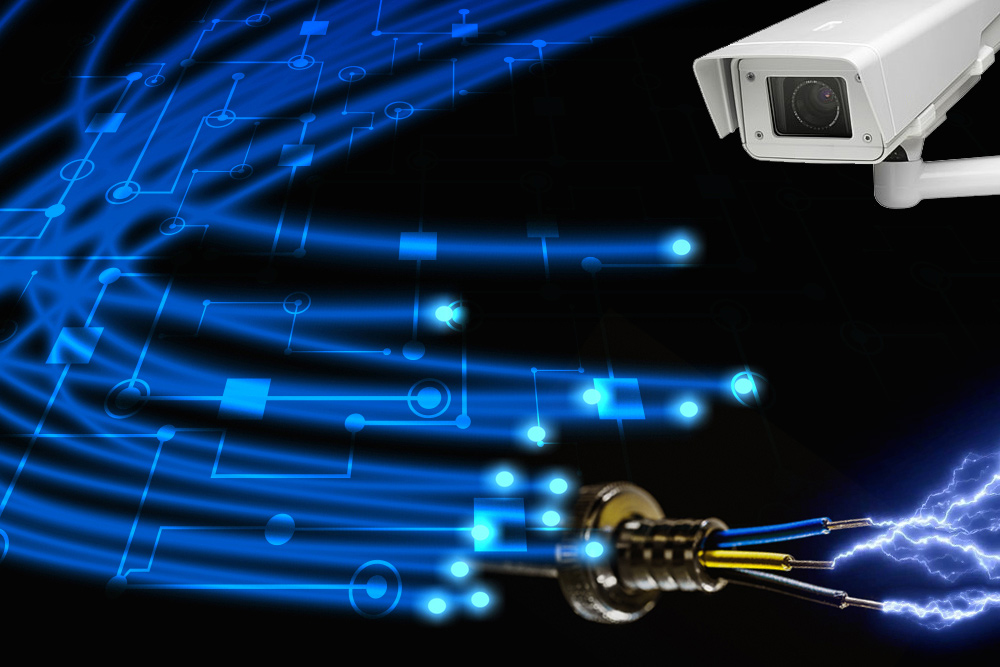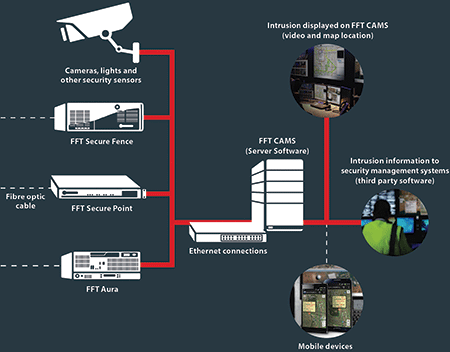A Step-by-Step Guide to Fiber Optics Infrastructure for Security Installations
A Step-by-Step Guide to Fiber Optics Infrastructure for Security Installations
Blog Article
Why Fiber Optic Safety Equipments Are the Future of Protection
The change to fiber optic protection systems notes a significant development in the realm of security, driven by their exceptional data transmission abilities and strength to exterior disturbances. As the landscape of protection evolves together with emerging modern technologies such as AI and IoT, the possibility for fiber optics to improve and redefine safety and security infrastructures becomes progressively obvious.
Benefits of Fiber Optic Solutions
One of the key benefits of fiber optic systems is their premium data transfer ability, which facilitates the transmission of large volumes of data over cross countries without significant loss. This particular is specifically valuable for safety and security applications that require the continuous surveillance and transfer of high-definition video feeds, sensing unit data, and other essential details. Fiber optics can fit the growing demands of modern-day protection systems, guaranteeing that data continues to be undamaged and reputable.
Additionally, fiber optic cables are less prone to electromagnetic interference, which can be a significant issue in environments with different electronic tools. This resistance enhances the stability of the information being transferred, therefore reducing the risk of information violations or system failings. Fiber optic systems are inherently more secure than standard copper cable televisions, as tapping right into a fiber optic line without detection is extremely tough.
The sturdiness of fiber optic wires additionally adds to their appeal. They are immune to ecological factors such as wetness and temperature fluctuations, minimizing upkeep prices and enhancing system durability. In general, these advantages setting fiber optic systems as a durable and efficient option for modern-day protection frameworks, ensuring reputable and protected data transmission.
Enhanced Data Transmission Speed

The capacity to send vast amounts of information quickly assists in the seamless assimilation of high-def video feeds and progressed analytics. Security systems can now process and analyze info in real-time, enhancing reaction times and situational awareness. Additionally, fiber optic connections support longer transmission ranges without destruction of signal quality, making them optimal for expansive security networks.
The boosted speed of fiber optic systems not only boosts the effectiveness of protection procedures however also decreases latency. This is especially important in essential scenarios where prompt decision-making can avoid protection violations or alleviate potential dangers. As organizations remain to prioritize security and effectiveness, the demand for rapid and reliable information transmission will unquestionably strengthen fiber optic systems as a foundation of modern safety and security infrastructure.
Resistance to Interference
Fiber optic browse around these guys safety systems regularly show outstanding resistance to electromagnetic interference, a vital advantage in settings basics prone to digital noise. Unlike standard copper wires, which can be adversely affected by magnetic fields, radio regularity interference, and various other kinds of electrical disturbance, fiber optic cords utilize light to transfer information. This inherent residential or commercial property guarantees that the signals continue to be clear and unchanged, no matter bordering electronic task.
Making use of glass or plastic fibers in fiber optic innovation creates an obstacle against disturbance, enabling dependable information transmission also in challenging situations such as industrial facilities, metropolitan locations with high electronic traffic, or areas near radio towers. This particular dramatically lowers the likelihood of signal destruction or loss, making fiber optic systems specifically suitable for security applications where honesty and precision of data are extremely important.
Additionally, this resistance to interference improves the total efficiency and reliability of safety systems, making certain that monitoring and sharp systems function perfectly. In a globe where safety is significantly threatened by advanced technologies, the resilience of fiber optic systems sticks out as an essential function, strengthening their condition as a crucial part of modern-day protection infrastructure.
Cost-Effectiveness Gradually
Substantial price financial savings can be attained in time with the application of fiber optic safety systems. While the first investment may seem higher compared to standard copper-based systems, the lasting financial advantages become noticeable through decreased functional and maintenance costs (fiber security). Fiber optic wires are inherently much more resilient and less at risk to ecological aspects, which converts to Visit Website lower substitute and repair service expenses over their life expectancy
Moreover, fiber optic systems call for much less power to run, which better lowers power costs. Improved data transmission capacities permit for fewer repeaters and amplifiers, minimizing devices investment and streamlining setup procedures. The scalability of these systems also adds to cost-effectiveness, as companies can expand their protection infrastructure without sustaining significant extra expenditures.
Another aspect to think about is the boosted efficiency in tracking and reaction capabilities that fiber optics supply. Enhanced real-time information transmission can cause quicker case reaction times, possibly mitigating losses and obligations associated with protection violations. Altogether, the long-term advantages of fiber optic safety and security systems not just warrant the preliminary expenditure but likewise place them as a financially sensible selection for companies seeking robust protection services.

Future Innovations in Safety
Progressing modern technologies are set to reinvent safety and security systems, integrating man-made knowledge (AI) and machine learning to enhance danger discovery and feedback capabilities. These technologies will enable security systems to evaluate huge amounts of information in real-time, identifying patterns and anomalies that suggest potential threats. This proactive strategy will allow quicker decision-making and much more reliable case reactions.
Additionally, the unification of the Web of Points (IoT) is leading the method for interconnected safety tools, providing extensive surveillance and tracking. Smart sensors can pass on details regarding ecological changes, while automated informs can notify safety workers promptly of suspicious activities.
Furthermore, the evolution of biometric modern technologies will certainly additionally reinforce security devices. Face acknowledgment, finger print scanning, and retina identification are ending up being a lot more advanced, offering layers of verification that are hard to bypass.
Verdict
Finally, fiber optic safety and security systems stand for a considerable development in protection technology, offering exceptional information transmission rate, resistance to electromagnetic disturbance, and lasting cost-effectiveness. As the need for innovative security remedies remains to grow, the integration of optical fiber with arising modern technologies such as AI, IoT, and biometrics will certainly additionally boost security infrastructures (fiber security). The mix of these developments will make sure a more safe and secure and receptive setting, strengthening fiber optics as a keystone of future security systems
Report this page